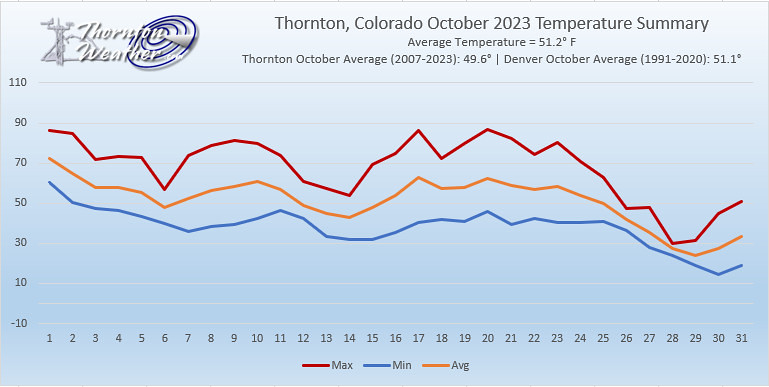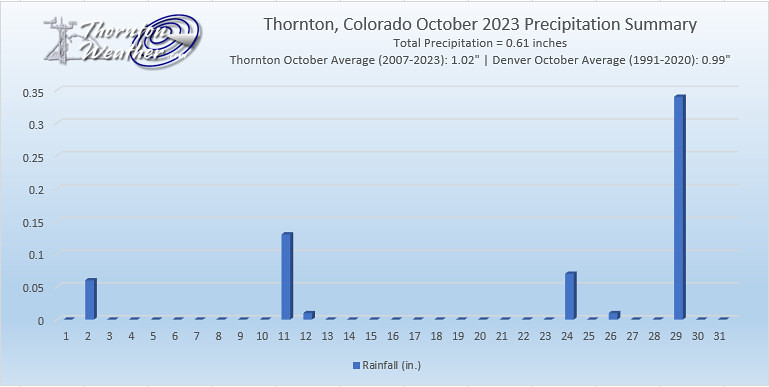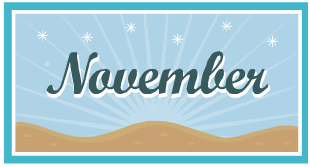
Our look back at this week in Denver weather history is dominated with two types of events: snow and wind. November is our second snowiest month and we see many significant snowfall events in the past. Wind is a fact of life on the plains and in Denver and damaging events have occurred with relatively frequency as we can see below.
From the National Weather Service:
2-5
In 1946…a major snow storm dumped 30.4 inches of heavy snowfall downtown and 31.0 inches at Stapleton Airport. The winter storm closed schools and disrupted all forms of transportation in the city. The greatest depth of snow on the ground was 28 inches at the airport. The duration of the snowfall…from 4:22 am on the 2nd to 3:08 am on the 5th… A total of 70 hours and 46 minutes…is the second longest period of continuous precipitation on record and the second heaviest snowfall of record at the time in Denver. The 17.7 inches of snowfall on the 2nd and 3rd was the greatest 24- hour snowfall ever recorded during the month of November. Buses and street cars had a difficult time…and many cars were abandoned along roadsides and streets for several days. Secondary roads in rural areas were blocked for 2 to 3 weeks. Several buildings in the city collapsed or were damaged from the weight of the heavy snow. Football games were canceled. Livestock losses were high over eastern Colorado. The precipitation from this storm alone exceeded the greatest amount ever recorded in Denver during the entire month of November previously. The precipitation recorded downtown was 2.03 inches…and the previous record for the entire month of November was 1.95 inches in 1922. North winds were sustained to 26 mph on the 2nd.
4-5
In 1933…the first measurable snow of the season totaled only 2.5 inches. This was the only measurable snow of the month. Northwest winds were sustained to 27 mph on the 4th.
In 1951…heavy snowfall of 5.7 inches was measured at Stapleton Airport where northwest winds gusted to 32 mph.
5
In 1896…west Chinook winds sustained to 44 mph with gusts to 46 mph warmed the temperature to a high of 56 degrees in the city.
In 1919…a rare November thunderstorm produced a mixture of rain and snow during the evening. Precipitation totaled only 0.14 inch with only a trace of snow. Northeast winds were sustained to 39 mph with gusts to 44 mph.
In 1948…a west-northwest wind gust to 50 mph was recorded at Stapleton Airport.
In 1994…winds gusted to 76 mph on the summit of Squaw Mountain…5 miles south of Idaho Springs.
In 2000…snow fell in the foothills west of Denver and across the southern suburbs. Snow totals included 6 inches near Evergreen…11 miles southwest of Morrison… And 7 miles south of Tiny Town and 5 inches in Aurora and Parker. Snowfall totaled 5.5 inches at the site of the former Stapleton International Airport. Northeast winds gusted to 26 mph at Denver International Airport where the visibility was reduced to 1/4 mile in heavy snow at times.
5-6
In 1938…heavy snowfall totaled 7.5 inches over downtown Denver. North winds were sustained to 16 mph with gusts to 19 mph on the 5th.
5-7
In 1918…rain was mixed with and changed to snow…which became heavy and totaled 8.1 inches in downtown Denver. North winds were sustained to 21 mph with gusts to 23 mph.
6
In 1962…west winds gusted to 55 mph…briefly reducing the visibility to 1 1/2 miles in blowing dust at Stapleton Airport. The strong winds blew all day.
In 1989…high winds to 62 mph were recorded in Boulder. Northwest winds gusted to 33 mph at Stapleton International Airport.
In 1991…strong westerly Chinook winds blew into metro Denver with gusts to 88 mph recorded at Rollinsville and to 51 mph in Boulder. Later…northeast winds with gusts of 30 to 40 mph were common across all of metro Denver behind a cold front…which produced only 0.2 inch of snowfall at Stapleton International Airport.
7
In 1958…a strong cold front produced northeast wind gusts to 52 mph at Stapleton Airport where some blowing dust was observed.
In 1980…Chinook winds at sustained speeds of 40 mph were recorded with a peak gust to 71 mph measured at Wondervu southwest of Boulder. West winds gusted to 25 mph at Stapleton International Airport.
In 1989…strong winds buffeted many foothills areas. Wind gusts of 60 to 70 mph were recorded in Boulder and Longmont. Northwest winds gusted to 43 mph at Stapleton International Airport.
In 1996…wind gusts to 75 mph were recorded at Golden Gate Canyon and at the Rocky Flats Environmental Test Facility northwest of Denver. Northwest winds gusted to 40 mph at Denver International Airport.
In 1998…upslope conditions…coupled with a moist and unstable air mass…allowed heavy snow to develop in the foothills west of Denver. Snowfall generally ranged from 4 to 6 inches…but 7 inches were measured 4 miles south of Evergreen. Only 1.2 inches of snow fell at the site of the former Stapleton International Airport. This was the first measurable snow of the season.
7-8
In 1969…wind gusts to 48 mph in downtown Boulder caused minor damage.
8
In 1896…southwest Chinook winds sustained to 42 mph with gusts as high as 46 mph warmed the temperature to a high of 53 degrees.
In 1977 near-blizzard conditions in blowing snow caused the closure of I-70 to the west of Denver in clear creek canyon and east of Denver to Limon. Northeast wind gusts to 46 mph were recorded at Stapleton International Airport where snowfall totaled only 1.1 inches.
In 1984…a rare November thunderstorm produced west winds gusting to 31 mph…but only 0.04 inch of rain at Stapleton International Airport.
In 1996…high winds gusting from 80 to 100 mph were recorded at Wondervu in the foothills southwest of Boulder. West northwest winds gusted to 32 mph at Denver International Airport.
In 2006…the temperature in Denver climbed to a high of 80 degrees. This was the first time the temperature had ever exceeded the 70’s in November since records began in 1872. This new all-time record maximum temperature for the month of November was also a new daily record and the highest temperature ever recorded so late in the season.
In 2020…a peak wind gust to 63 mph was observed at Centennial Airport from the southwest. At Denver International Airport…a peak gust to 53 mph was observed. Continue reading November 5 to November 11: This week in Denver weather history



 The weather during the month of November in Denver metro area can offer just about anything. While it is normally a quiet month, it can be prone to extremes.
The weather during the month of November in Denver metro area can offer just about anything. While it is normally a quiet month, it can be prone to extremes.

